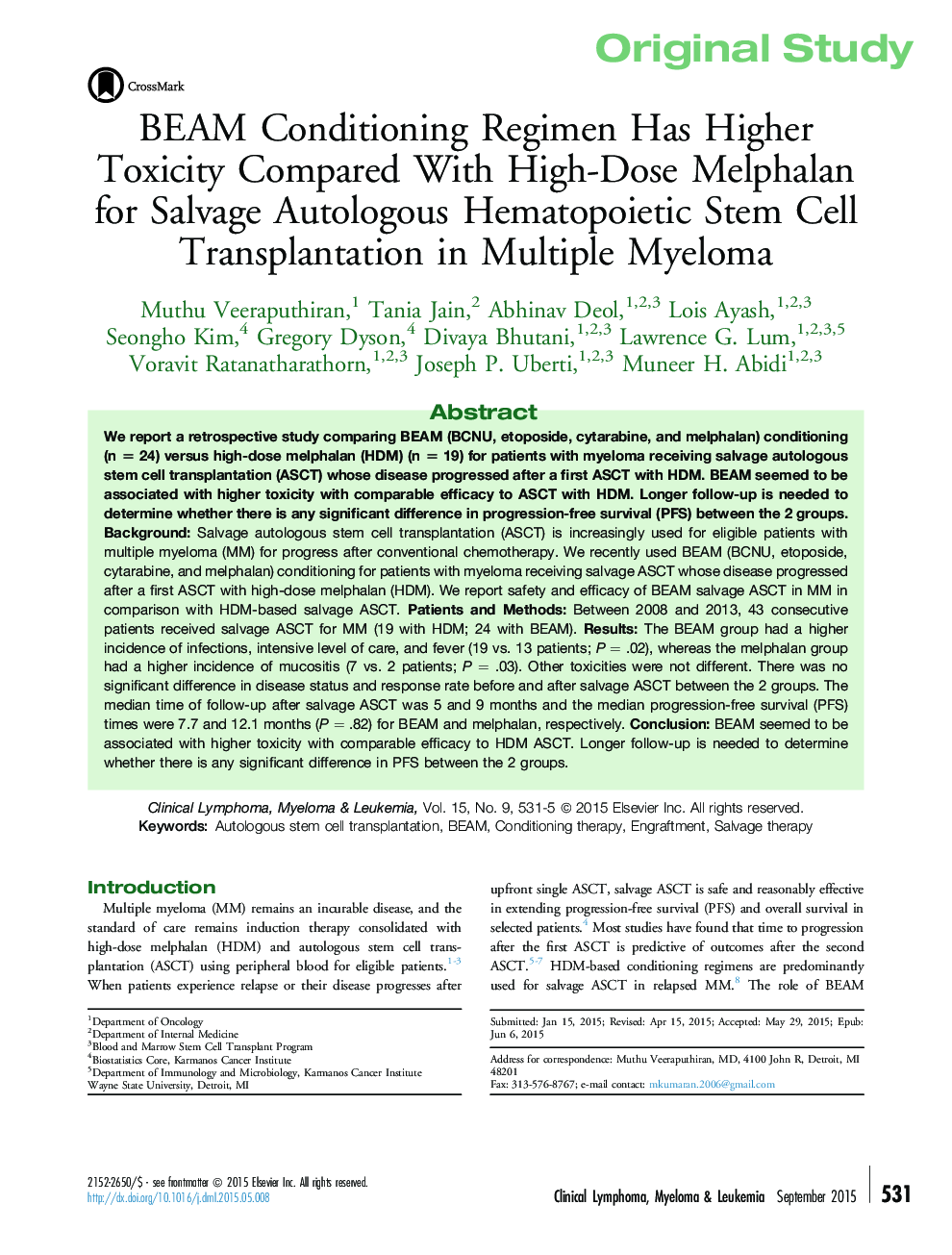| Article ID | Journal | Published Year | Pages | File Type |
|---|---|---|---|---|
| 2754326 | Clinical Lymphoma Myeloma and Leukemia | 2015 | 5 Pages |
BackgroundSalvage autologous stem cell transplantation (ASCT) is increasingly used for eligible patients with multiple myeloma (MM) for progress after conventional chemotherapy.We recently used BEAM (BCNU, etoposide, cytarabine, and melphalan) conditioning for patients with myeloma receiving salvage ASCT whose disease progressed after a first ASCT with high-dose melphalan (HDM). We report safety and efficacy of BEAM salvage ASCT in MM in comparison with HDM-based salvage ASCT.Patients and MethodsBetween 2008 and 2013, 43 consecutive patients received salvage ASCT for MM (19 with HDM; 24 with BEAM).ResultsThe BEAM group had a higher incidence of infections, intensive level of care, and fever (19 vs. 13 patients; P = .02), whereas the melphalan group had a higher incidence of mucositis (7 vs. 2 patients; P = .03). Other toxicities were not different. There was no significant difference in disease status and response rate before and after salvage ASCT between the 2 groups. The median time of follow-up after salvage ASCT was 5 and 9 months and the median progression-free survival (PFS) times were 7.7 and 12.1 months (P = .82) for BEAM and melphalan, respectively.ConclusionBEAM seemed to be associated with higher toxicity with comparable efficacy to HDM ASCT. Longer follow-up is needed to determine whether there is any significant difference in PFS between the 2 groups.
